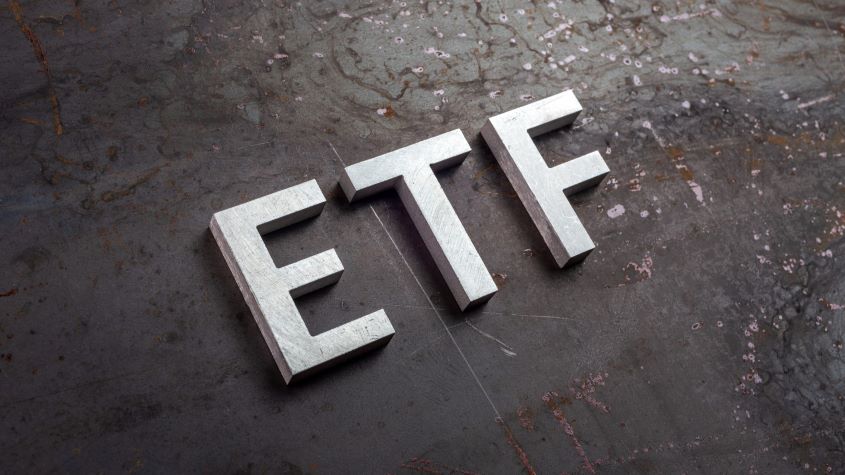The MoneyWeek ETF portfolio review
We’ve put together the MoneyWeek ETF portfolio to give investors a simple way to navigate uncertain markets. Here’s a summary of where we stand.


About ten years ago, MoneyWeek’s editorial team put together a simple asset-allocation portfolio, implemented solely with index trackers – either exchange-traded funds (ETFs) or unit trusts/open-ended investment companies. This portfolio aimed to strike a balance between growth and protection. It didn’t attempt to forecast the future or time the market – instead, it aimed to cope well across a range of likely scenarios.
About the MoneyWeek ETF Portfolio
When the portfolio was first put together, the major concerns for investors were centred on monetary and fiscal policy. To quote from the very first update: “Central banks across the world are printing money. The banking system is still at death’s door. Interest rates have never been this low. Global stockmarkets have seen two vicious crashes since the start of the millennium. It feels as though the prices of most investments – shares, bonds, property – rise or fall on the whim of central bankers and politicians.”
For most of the next decade, that was a fair description of how markets worked. The banking system was gradually cleaned up (much faster in America than elsewhere) and the eurozone debt crisis passed its acute phase (although growth remained weak), but quantitative easing continued and interest rates remained low. This in turn meant that valuations of many other assets looked extremely stretched by past standards because they were priced off government bonds in an era when yields were turning negative.
That’s now changed. It may have been coming to an end by 2020 despite central bankers’ tardiness in raising rates, but the pandemic accelerated it by creating an inflation shock that left no justification for such loose policy. And so valuations have started to look saner. A greater range of investments are now priced at a level where they can deliver reasonable returns. Previously they only made much sense if rates remained low and inflation quiescent forever.
On the other hand, we face threats that were much lower on the agenda a decade ago. Markets wobbled over unrest in the Middle East or North Korea’s nuclear weapons – but in the end, there was little reward for any analysis beyond forecasting that rates would stay low for years. Reading back through these past issues and comparing them to today, one thing stands out. Investors have for the most part still not taken on board how different today looks compared with 2013, and they long for a return to a simple, low-rate world. The process of adjusting to this new reality is likely to be volatile.
MoneyWeek
Subscribe to MoneyWeek today and get your first six magazine issues absolutely FREE

Sign up to Money Morning
Don't miss the latest investment and personal finances news, market analysis, plus money-saving tips with our free twice-daily newsletter
Don't miss the latest investment and personal finances news, market analysis, plus money-saving tips with our free twice-daily newsletter
MoneyWeek ETF portfolio reviewed
Over the last few issues, I’ve reviewed the first five positions in the MoneyWeek exchange-traded fund (ETF) portfolio and the halfway mark is a good point to summarize where it now stands. The table below shows the current portfolio. The biggest change was to add back some conventional government bonds. We are still considering whether an equal-weighted US ETF might be better than a market-weighted one, given the increasing concentration of the US market, but have kept the overall 10% allocation to US equities.
Most investors will invest the cash component in whatever gives them the best risk-free interest rate (e.g. savings accounts), and it would be useful to proxy this in the portfolio. We looked at some cash and bond funds and I’ve decided to choose the Invesco US Treasury Bond 0-1 Year GBP Hedged ETF (LSE: TIGB). This has a very short duration (0.5 years), holds only US government bonds (minimal credit risk), and is hedged into sterling (no currency risk). I prefer it over iShares UK Gilts 0-5yr (LSE: IGLS), the closest gilt equivalent, because the duration on the latter is longer (2.25 years), taking us into the territory of bonds rather than cash.
In total, 50% of the portfolio is in stocks: US, Europe including the UK, UK mid-caps, Japan, and emerging markets. This reflects our overall aim: we want to grow the value of the portfolio in real terms while also dampening down volatility and tail risks, and stocks are generally viewed as the core asset for earning capital gains. It certainly makes sense that stocks should deliver better long-term returns than other major asset classes in a successful economy. In principle, companies and their investors should be receiving some of the profits from long-term economic growth, while bondholders only get back what they lend.
Stocks have beaten bonds on average: between 1900 and 2022, they outperformed by 5% a year, according to data from the Credit Suisse Global Investment Returns Yearbook. Still, the extent of outperformance depends much more than many investors realize on when you start and which countries you hold. Since 1973, for example, world stocks excluding the US beat bonds by just 0.3% per year, while US stocks did so by 2.7%.
Starting valuations matter: when stocks are cheap relative to bonds or cash, you’ll earn higher long-term returns. We can’t control that – but we can tilt towards markets that seem cheaper, and we do. The US seems more expensive than other markets and so we underweight it (US stocks are about 60% of the global market cap). At the same time, the future is unpredictable, so we want to keep a minimum level of diversification. Thus, our current allocation to US stocks is about 20% of our overall equity holdings – broadly in line with its share of the global economy.
| Cash (proxied by LSE: TIGB) 0% 10% | 10% |
| iShares $ Treasury Bond GBP Hdgd (LSE: GOVP) | 10% |
| iShares $ TIPS (LSE: ITPS) | 10% |
| iShares Physical Gold (LSE: SGLN) | 10% |
| Vanguard S&P 500 (LSE: VUSA) | 10% |
| Vanguard FTSE Dev. Europe (LSE: VEUR) | 10% |
| Vanguard FTSE 250 (LSE: VMID) | 10% |
| Vanguard FTSE Japan (LSE: VJPN) | 10% |
| iShares Core MSCI Em. Markets (LSE: EMIM) | 10% |
| iShares Dev. Market Property Yield (LSE: IWDP) | 10% |
This article was first published in MoneyWeek's magazine. Enjoy exclusive early access to news, opinion and analysis from our team of financial experts with a MoneyWeek subscription.
Related articles
- Is it a good time to buy bonds?
- 5 of the best gold ETFs
- All you need to know about exchange-traded funds
Get the latest financial news, insights and expert analysis from our award-winning MoneyWeek team, to help you understand what really matters when it comes to your finances.
Cris Sholto Heaton is an investment analyst and writer who has been contributing to MoneyWeek since 2006 and was managing editor of the magazine between 2016 and 2018. He is especially interested in international investing, believing many investors still focus too much on their home markets and that it pays to take advantage of all the opportunities the world offers. He often writes about Asian equities, international income and global asset allocation.
Cris began his career in financial services consultancy at PwC and Lane Clark & Peacock, before an abrupt change of direction into oil, gas and energy at Petroleum Economist and Platts and subsequently into investment research and writing. In addition to his articles for MoneyWeek, he also works with a number of asset managers, consultancies and financial information providers.
He holds the Chartered Financial Analyst designation and the Investment Management Certificate, as well as degrees in finance and mathematics. He has also studied acting, film-making and photography, and strongly suspects that an awareness of what makes a compelling story is just as important for understanding markets as any amount of qualifications.
-
 London claims victory in the Brexit wars
London claims victory in the Brexit warsOpinion JPMorgan Chase's decision to build a new headquarters in London is a huge vote of confidence and a sign that the City will remain Europe's key financial hub
-
 Rachel Reeves's Autumn Budget: What it means for the UK
Rachel Reeves's Autumn Budget: What it means for the UKOpinion A directionless and floundering government has ducked the hard choices at the Autumn Budget, says Simon Wilson
-
 Halifax: House price slump continues as prices slide for the sixth consecutive month
Halifax: House price slump continues as prices slide for the sixth consecutive monthUK house prices fell again in September as buyers returned, but the slowdown was not as fast as anticipated, latest Halifax data shows. Where are house prices falling the most?
-
 Rents hit a record high - but is the opportunity for buy-to-let investors still strong?
Rents hit a record high - but is the opportunity for buy-to-let investors still strong?UK rent prices have hit a record high with the average hitting over £1,200 a month says Rightmove. Are there still opportunities in buy-to-let?
-
 Pension savers turn to gold investments
Pension savers turn to gold investmentsInvestors are racing to buy gold to protect their pensions from a stock market correction and high inflation, experts say
-
 Where to find the best returns from student accommodation
Where to find the best returns from student accommodationStudent accommodation can be a lucrative investment if you know where to look.
-
 The world’s best bargain stocks
The world’s best bargain stocksSearching for bargain stocks with Alec Cutler of the Orbis Global Balanced Fund, who tells Andrew Van Sickle which sectors are being overlooked.
-
 Revealed: the cheapest cities to own a home in Britain
Revealed: the cheapest cities to own a home in BritainNew research reveals the cheapest cities to own a home, taking account of mortgage payments, utility bills and council tax
-
 UK recession: How to protect your portfolio
UK recession: How to protect your portfolioAs the UK recession is confirmed, we look at ways to protect your wealth.
-
 Buy-to-let returns fall 59% amid higher mortgage rates
Buy-to-let returns fall 59% amid higher mortgage ratesBuy-to-let returns are slumping as the cost of borrowing spirals.
